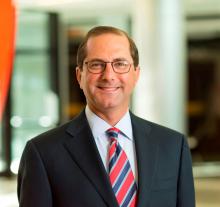We are pretty excited about Primary Care First, for what it symbolizes.
The academy has long suggested that fee for service is not congruent with the core elements of advanced primary care, and our internal policies have asked for payments for primary care patients to be realigned in a way that would facilitate or drive this type of care.
There are a lot of details that we need to understand, but I think this model represents a really significant step towards prospective population-based payments. This model enables primary care physicians to continue to provide continuous and comprehensive care to their patients. It is a big step away from fee for service and we think that’s good for primary care.
I think primary care when it functions at its best really relies upon three elements; continuity and comprehensiveness are probably the two most important elements, and the third is coordination. These three elements are associated with better outcomes and lower cost in several studies. The idea that a patient would have a longitudinal (continuous) relationship with a primary care physician who provides comprehensive services is a desired policy objective.
This model, by implementing prospective, per patient payments, allows practices to focus on longitudinal patient-centered care versus episodes of care that drive revenue. The fee for service, in contrast, offers a payment by service, so it creates individual episodes of care. For the last decade we have questioned whether fee for service can really drive the key elements of primary care of the patient.
There’s always a place for fee for service, but as a foundation, I think the prospective nature of payments is a really important element of what the CMS did. Since physicians would receive payments in advance for providing comprehensive care, they won’t have to generate services to manage their revenue cycle.
I think the Direct Contracting payment model is interesting in that it requires a practice to have a minimum of 5,000 beneficiaries and involves the practice taking on risk for a large population of people. There are a lot more questions on the direct contracting side, but I think, philosophically, we could see why it would be a successful payment model.
From a 30,000 foot perspective, the Primary Care First program should allow any physician practice, regardless of size, to participate. It’s conceivable even for a solo practice to participate in this model.
Our main concern about this model is its geographic restrictions, and we would like to see more states added to this program quickly.
R. Shawn Martin is president of advocacy, practice advancement and policy of the American Academy of Family Physicians. He made these comments in an interview.


